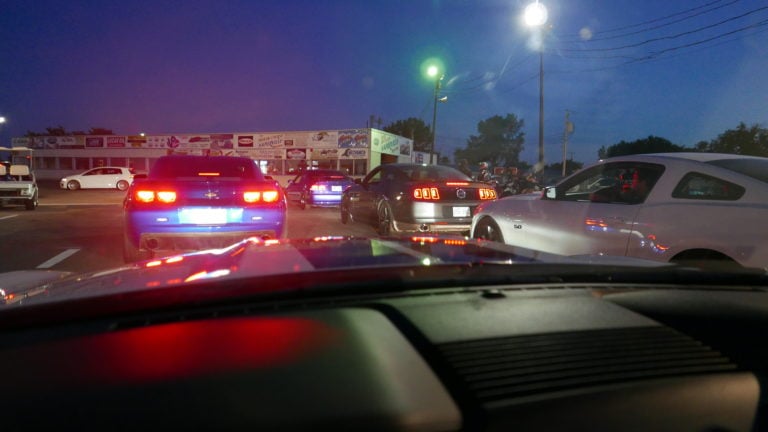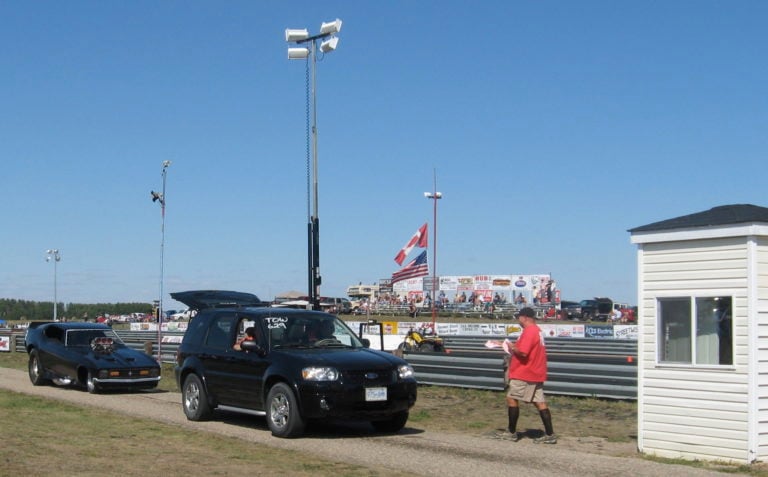
Hit the track! Making your first time at the drag strip fun, stress-free, and safe
- Motorsports
- April 19, 2017
Drag racing is one of the most casual, fun, and affordable ways to get involved in motorsports. At its simplest, drag racing is as easy as rolling up to your closest strip, paying the price of admission, and then hitting the gas pedal once the staging lights turn green. To get the most out of the experience, however, and to keep you and your vehicle safe and in great shape for the drive home at the end of the event, we’ve put together a few tips that should help guide you through your first time at the drag strip.
Take Care Of Any Outstanding Maintenance First
Drag racing doesn’t have to be all that stressful on your car, especially if it’s in relatively stock condition. After all, you’re only asking for between 13 and 16 seconds of full throttle per run, and there’s usually a chance to cool things down before your next trip down the strip. Still, hammering the throttle has a way of revealing any weaknesses that might be lurking in your car’s drivetrain or suspension, especially if you catch good traction and send a significant amount of power to the drive wheels all at once. This is why it’s worth inspecting your car beforehand to see if there’s anything that stands out as needing repair or replacement.
Are your tires in good shape, with no cracks in the tread, bulges, or baldness? Is your motor oil still within its change interval, and is your engine coolant topped up? Any leaks, weird sounds from the suspension, or ticks from the engine that could indicate a problem? Is your battery secured? You don’t need to get under your car with a lift to verify that everything is tip-top, but a quick visual inspection and brief drive around the block will help you figure out if there’s any maintenance that needs to be taken care of. It’s also a good idea to remove any loose objects from inside to prevent them from rattling around the cabin and distracting you or potentially becoming projectiles in a worst-case scenario.
Some tracks might also have you go through a tech inspection before they let you down the quarter or eighth-mile, which will involve a team member checking out much of the above.


Dress For Success
Most tracks have a loose, but safety-oriented dress code intended to help keep everyone protected from fire, flying rubber, and other on-track mishaps. Make sure you’re wearing closed-toed shoes, long pants, and for some, drag strips, even long sleeves, although typically a t-shirt will get you through the event. If you’re racing during the day, sunscreen and plenty of water to stay hydrated will be a big help, and if the sun goes down, you’ll appreciate having a sweatshirt to keep you warm.


Be Observant
It’s tempting to just head right to the staging lanes as soon as you’ve handed over your cash and gotten the soap number written on your car’s window, but it’s a better idea to park your car and simply be a spectator for the first 20 minutes or so. Watch and see how the cars behave while staging, how the track crew directs them to line up against each other, whether street cars drive through or around the water boxes for burnouts, and how the staging lights work. Watching this process will make it that much easier for you to do it yourself when you feel ready.
Throughout the event, you’ll also want to keep a close eye on how your car is behaving to make sure you don’t push it too hard. It’s easy enough to lose track of how much fuel is in the tank after a few runs, so don’t forget to watch the gauge, so you don’t end up running on fumes. Another readout you’ll want to pay attention to is the engine temperature – if the needle starts to creep towards the red, it’s time to take a break: crank up the cabin heat, park the car, and keep it running with the hood popped to help the fan cool things down and keep the water pump circulating antifreeze.
Stay Calm, Be Careful, Be Consistent
The moment has arrived: you’re rolling from the staging lanes into the burnout box on your way to the starting line. There’s a lot of adrenaline pumping through your veins right now, and you’re probably a bit nervous, too, because everyone is watching you. Relax – this isn’t a professional try-out, there’s no trophy waiting for you at the end of the event, and you are just here to have fun.
If you are on street tires, you really don’t need to do a burnout – in fact, heating up a street compound is likely to reduce, not improve traction. This means you can drive around the water box and advance slowly to the staging lights. These are two beams of light that project across the track just in front of the starting line. Once you’ve broken the first beam, a small yellow light at the bottom of the tree (the post that sits between each lane with the yellow, green, and red lights attached to it) will illuminate. This tells you that you only need to move forward a little bit further to break the second beam, which will get the second small yellow light to glow. At that point, it’s time to stop your car and wait for your opponent to do the same thing if they haven’t already (just like you saw earlier when you were watching others compete).
Once you are both ‘staged,’ you’ll get a countdown from the tree. Most trees will illuminate a sequence of yellow lights before the green, but if the track you are at is running a ‘street race’ or ‘heads-up’ event, you might just get one flash of yellow then a flash of green. Again, you’ll know from having watched others race before you. Try to time your start between the last flash of yellow and the flash of green, because if you wait for just the green light, you’ll be left behind by a more experienced racer.
If you hit the gas too soon and ‘beat the green,’ a red light will go on, and you’ll have lost the race. It’s not a big deal – again, you are there to have fun, and you’ll still receive a time slip for your run – but it’s something you can practice at to improve your reaction time off of the line.
One last word of advice: while it might seem like drag racing is all about power, it’s more about traction. Horsepower won’t help you if you can’t put it to the pavement, so keep that in mind when launching your car. You’ll want to minimize wheel spin, and the easiest way to do that is to be smooth when rolling onto the accelerator and releasing the clutch (if you have a manual car), or when transitioning from the brake to the gas pedal (if you have an automatic). Keep that smoothness as you accelerate down the track, as it will help you avoid missing a shift or over-revving the engine.


Have Fun!
The most important thing to keep in mind the first time you try drag racing? Have fun! Don’t put pressure on yourself to be the fastest person at the strip, and try to see how consistent you can be with your times and trap speeds. Talk to other people around you, ask plenty of questions, and soak up the atmosphere. After all, you’re racing – and it doesn’t get much cooler than that.
